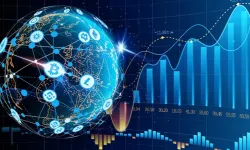While economists in the US see the economy in good shape, Americans disagree. It seems possible to close this gap only with a 'soft landing'.
There is a 'huge mismatch' between experts and ordinary Americans on the economy.
Consumption, wages and recession
According to an article by Fortune's Sanjay Datta, economic data always offers some signals. Often these signals tell a coherent story about whether America is doing well and the reasons why. But today is not such a time. Macro and micro realities are more out of sync than at any time in history. Many economists say America is objectively doing well, but many fundamentally disagree.
Headlines tout strong economic growth and a strong labor market, but polls show that most Americans are deeply pessimistic about today's economy. GDP growth remains strong, even as interest rates rise at the steepest pace in decades. Inflation is pushing prices higher, but per capita personal consumption continues to rise. Borrower defaults are rising across all consumer segments and products, even in the midst of the hottest labor market in recent times.
There is a need for these pathways to converge rather than diverging further. Hence the need to reduce consumption as a country in 2024. Indeed, some use the word 'recession' to describe this need, but a broader view of the current realities shows that the real problem is that we are consuming too much relative to our paychecks. While the word recession is scary, a slowdown or slight contraction in GDP has the ability to reintroduce a concept that Americans long for: "stability."
Mixed signals
During the pandemic, the government injected huge amounts of money into the system. Inflation should not have been a surprise; a 40 percent increase in the money supply should have affected prices.
Stimulus, which came unexpectedly, led older workers, especially those nearing retirement, to work less. Meanwhile, the stimulus was used to buy Teslas, Wayfair sofas and Pelotons - what economists call 'durable goods' - and this has become a habit.
High interest rates did almost nothing to dampen the new spending habits because not much credit was needed to sustain it. The excess cash from the stimulus has remained in the economy, but the extra cushion that many Americans enjoyed has largely disappeared.
At the same time, the structural labor shortage accelerated. When the pandemic hit, America was already in a position of needing more workers than it had. The fact that many older workers have not returned from quarantine has exacerbated the labor shortage, leaving the US economy today with almost 9 million unfilled jobs.
Compared to pre-pandemic figures, income growth has not kept pace with the pace of rampant consumption. Labor gains have remained lethargic, and wage gains from a hot labor market have been offset by a combination of rising consumer prices and stimulus that continues to slowly withdraw from the economy.
We don't have to go far back to see what will happen if these trends continue. The growing imbalance between consumption and income has pushed savings rates to their lowest point in 65 years. The only previous comparable period was in the aftermath of the Global Financial Crisis. Back then, the main reason for the precarious financial health was the stress of 10 percent unemployment. Today, consuming beyond means is causing this situation to take on a life of its own.
A half step backwards could be the key to a soft landing
In general, Americans consume far more than they earn and save, leading to rising levels of debt default. GDP growth is moving faster than can be handled. This process needs a touch-up. For this, just a spoonful of macro concern can help put consumers' finances in better shape and persuade them to return to a healthier and more sustainable level of consumption.
By creating conditions for a short-term economic cooling, a softening of consumption, and hence production, is unlikely to drive the current undersupplied labor market into severe unemployment; instead, it is more likely to bring the current severe labor imbalance closer to equilibrium. And provided, of course, that the government responds to any signs of economic malaise with low interest rates, which would benefit the financial health of all consumers.















